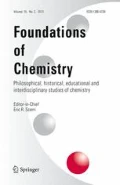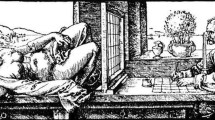Abstract
This paper explores the use of chemical symbolism in works by the new media artist Sonya Rapoport, with a focus on the pivotal Cobalt series from the late 1970s. These works, drawings on computer printouts generated by research at the Lawrence Berkeley Laboratory, respond to experiments in nuclear chemistry. They mark the beginning of three productive decades in which Rapoport produced a variety of images related to chemistry in her work. She states, “I looked for authentic research projects that were interesting to me, preferably with captivating pictorial subject matter. Then came the creative chaotic process of resolving a cohesive product that combined scientific research with art concept.” Rapoport had an unusual degree of access to scientific materials through her husband, organic chemist Henry Rapoport, a faculty member at the University of California, Berkeley. At the time of production, these works were outside mainstream art world interests and they have received little critical attention. This paper examines the development of Rapoport’s images and places her use of chemical references in context in her lifetime of work.








Similar content being viewed by others
Notes
The range of possible interpretations can be suggested by two examples: John Lash, who describes his field as “metahistory,” offers a literalist reading in which he calls The Green Lion “a naive symbol indicating how sunlight converts to chlorophyll and thus provides vital energy….” (Lash 2006) Religious historian Karen-Claire Voss argues that “Symbolically this depicts a stage in the development of the alchemist where the illumination that was previously regarded as outside, “other,” to himself, is now being assimilated into his or her very being.” (Voss 1994)
It was not simply chemical imagery and symbolism that fed Rapoport’s work, but also interaction with chemists. In a 1995 dialog with Anna Couey and Judy Malloy, Rapoport told a story about the advent of interactivity in her work that nicely demonstrates one aspect of the way her position in the University of California Chemistry Department social network contributed to her artistic development: “… a group (about 40) of my husband’s chemistry graduate students and post-docs were coming over for Thanksgiving dinner. For their entertainment, I drew on my studio floor two NETWEBS, mine with my own associative distribution of card images placed along related theme axes; and the empty plot for them to fill. Very amenable and bright and interested in my art work, the group viewed the configuration that reflected me, the artist, and were excited to reconstruct their own configuration. Winifred interviewed and taped each participant’s response as to choice of image card and why the placement in the particular theme. The verbal inquiry heightened the sense of participation, intensified the vitality of the process and provided documentation. So I added another phase to Objects on My Dresser.” (Couey and Malloy 1995). “Netweb,” a term Rapoport began around 1981, is her word for a spider-web-like drawing or construction showing the associations generated by the objects from her dresser; Rapoport later made an installment of Objects on My Dresser that compared the associative webs produced by artists, scientists, and lawyers.
References
Couey, A., Malloy, J.: A Conversation with Sonya Rapoport, Interactive Conference on Arts Wire June. Available via Web site. http://www.well.com/~couey/interactive/rapoport/sonya.html (1995). Accessed 30 June 2008
Lash, J. In: The Radiant Wisdom Stone. Available via Web site. http://www.metahistory.org/StoneWise.php April 22, (2006). Accessed 12 February 2008
Rapoport, S.: Interview with author. Berkeley, CA (2007). July 21
Stipp, D.: In: Trouble in Prozac. Fortune. Available via Web site. http://money.cnn.com/magazines/fortune/fortune_archive/2005/11/28/8361973/index.htm November 28, (2005). Accessed 12 February 2008
Voss, K. In: Gnosis and Hermeticism from Antiquity to Modern Times. http://www.istanbul-yes-istanbul.co.uk/alchemy/Spiritual%20Alchemy.htm August (1994). Accessed 12 February 2008
Author information
Authors and Affiliations
Corresponding author
Rights and permissions
About this article
Cite this article
Tromble, M. The advent of chemical symbolism in the art of Sonya Rapoport. Found Chem 11, 51–60 (2009). https://doi.org/10.1007/s10698-008-9058-1
Received:
Accepted:
Published:
Issue Date:
DOI: https://doi.org/10.1007/s10698-008-9058-1




